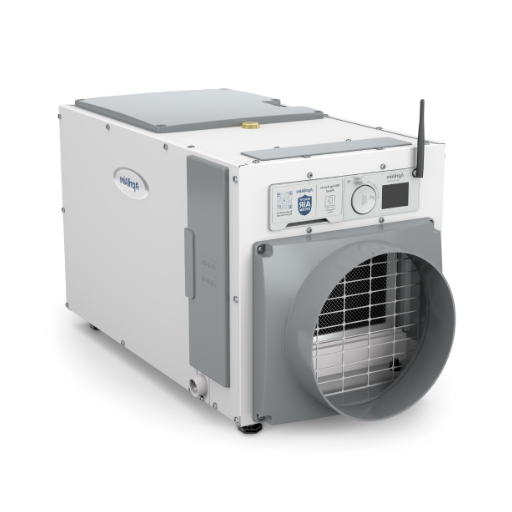Quick Answer: The optimal humidity setting for most basements is between 30-50% relative humidity, with 40-45% being ideal for most situations.
Keeping your basement humidity level just right is of utmost importance if you want to set up a healthy and comfortable environment in your home. Basements are essentially prone to dampness due to their position and exposure to moisture, which brings corresponding problems such as mold, bad odors, and even structural damage. A dehumidifier, if used correctly, can greatly assist in keeping off these troubles, so it is important to know how to actually apply it.
This article will tell you about the best humidity levels for your basement and their importance, along with how to actually set up your dehumidifier to maintain a safe and balanced setting. So, whether stuck in a situation of persistent dampness or aiming to keep it on the horizon, this guide shall equip you with the right information.
Understanding Dehumidifiers and Humidity Levels
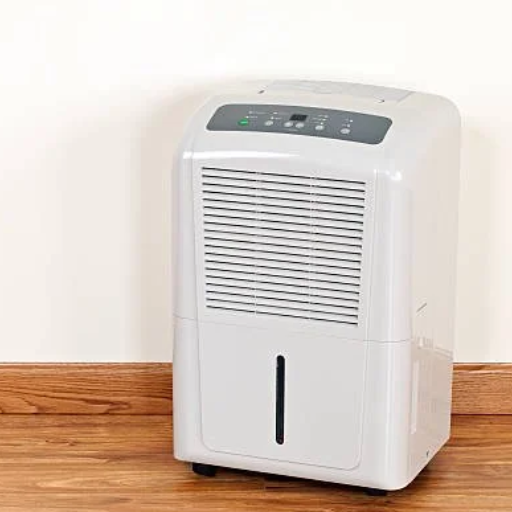
What is a Dehumidifier?
Considered one type of dehumidifier, the class of appliances that removes moisture by extracting water vapor from the air. It draws air filled with moisture into its interior, cools the air until condensation takes place, and then disperses air with a lower level of moisture back into the room. On the other hand, it maintains the indoor humidity level, which most experts believe should fall between 30% and 50% for comfort and health.
Key Benefits of Dehumidifiers:
- Prevents mold and mildew growth
- Reduces dust mites and allergens
- Protects the structural integrity of your home
- Improves indoor air quality
- Eliminates musty odors
Importance of Maintaining Optimal Humidity Levels
Keeping good humidity levels is necessary for good health and preservation of property. Elevated humidity, as considered by research in the social sciences, keeps mold, mildew, and dust mites from thriving in indoor conditions. Dust mites and molds are high-moisture-loving agents that exacerbate respiratory conditions like asthma and allergies.
| Humidity Level | Effects | Recommended Action |
|---|---|---|
| Below 30% | Dry skin, respiratory irritation, static electricity | Consider adding moisture |
| 30-50% | Optimal comfort and health | Maintain this range |
| Above 60% | Mold growth, dust mites, and structural damage | Use the dehumidifier immediately |
How Humidity Affects Your Health and Comfort
Humidity is critical in determining our health, comfort, and well-being in an indoor environment. When humidity is too high, molds, dust mites, and bacteria thrive in buildings and which can trigger allergies, worsen asthma symptoms, and cause respiratory disorders from exposure to them.
Health Risks of Improper Humidity:
- High Humidity: Excessive sweating, heat-related disorders, mold exposure, respiratory issues
- Low Humidity: Dry skin, irritated eyes, increased infection risk, worsened eczema/psoriasis
Best Humidity Settings for Different Environments
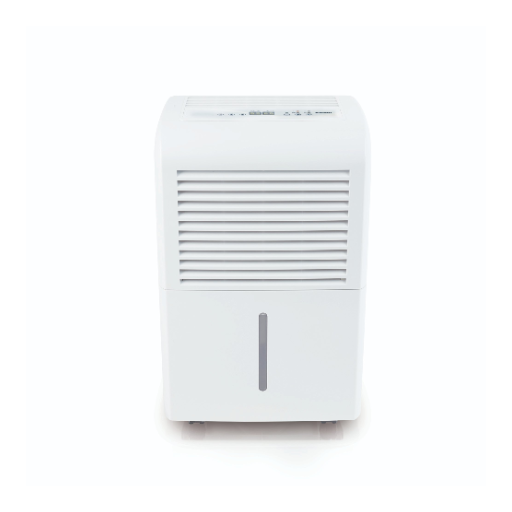
Ideal Humidity Level for Basements
Basements generally should have their humidity level maintained between 30% and 50% to be considered ideal. Given that basements tend to be cool and may suffer from poor ventilation, retaining these levels is especially important so as not to encourage mold and mildew growth, as these organisms grow rapidly in environments where relative humidity surpasses 60%.
Setting Your Dehumidifier for Living Spaces
For dehumidifier window-conditioned air in living accommodations at a window, the relative humidity indoors should range between 30% and 50%, per the EPA’s recommendations. Most homes achieve 40%-45% RH by setting their dehumidifiers accordingly in the bedrooms, dining areas, etc.
Adjusting Humidity Settings by Season
| Season | Recommended Humidity Range | Key Considerations |
|---|---|---|
| Winter | 30-40% | Prevent condensation on windows |
| Summer | 40-50% | Combat high outdoor humidity |
| Spring/Fall | 35-45% | Moderate adjustments as needed |
Factors Influencing Dehumidifier Performance
Room Size and Dehumidifier Capacity
Room size and capacity to remove water per day are significant factors determining the effectiveness of a dehumidifier. The larger the space, the greater the pint capacity the dehumidifier must have to ensure efficient moisture extraction.
| Room Size | Recommended Capacity | Example Areas |
|---|---|---|
| Under 300 sq ft | 20-30 pints/day | Small bedrooms, bathrooms |
| 300-800 sq ft | 30-40 pints/day | Large bedrooms, living rooms |
| 800-1,500 sq ft | 40-50 pints/day | Basements, open floor plans |
| Over 1,500 sq ft | 50+ pints/day | Large basements, commercial spaces |
Climate Considerations for Optimal Settings
Dehumidifier settings entirely depend on the climate and the relative humidity pattern of the region. If the area maintains high relative humidity, such as in tropical or coastal areas, it would be ideal to have the dehumidifier with a higher pint capacity to cope efficiently with such moist conditions.
Influence of HVAC Systems on Humidity Control
In HVAC systems, regulating humidity is an essential condition of comfort and protection of the building. The majority of central air conditioning systems will dehumidify air to some degree as they cool the air by the action of evaporator coils, which remove moisture from the air through condensation.
Common Mistakes to Avoid When Setting a Dehumidifier
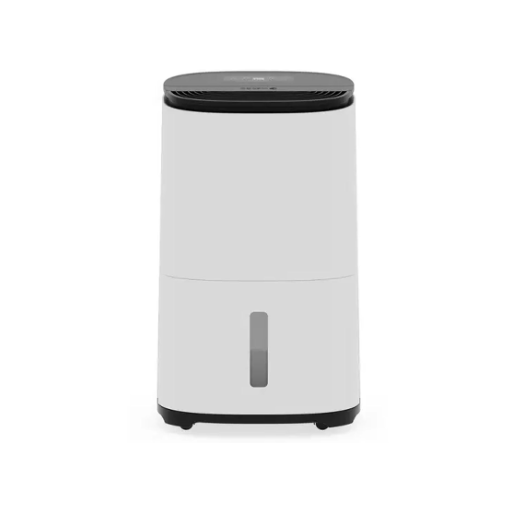
Incorrect Humidity Settings
Common Setting Mistakes:
- Setting too low: Causes dry air, skin irritation, and respiratory problems
- Setting too high: Fails to control moisture, allowing mold growth
- Not adjusting seasonally: Inefficient operation and energy waste
Neglecting Regular Maintenance
Neglecting regular maintenance on your dehumidifier could have major long-term effects on the performance of the unit and the air quality indoors. If maintained poorly, it will accumulate dust in air filters, mold on coils, and debris in water collection tanks.
Essential Maintenance Tasks:
- Clean or replace air filters every 1-3 months
- Empty and clean the water collection tank regularly
- Check the condensate drain for clogs
- Inspect coils for dust and mold buildup
- Calibrate humidity sensors as needed
Tips for Achieving Optimal Performance
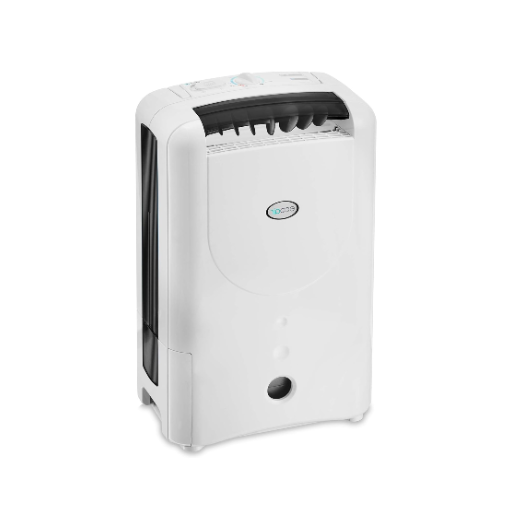
How to Properly Set Your Dehumidifier
- Placement: Position centrally on a flat, stable surface with 12 inches of clearance on all sides
- Initial Setting: Start with 45% humidity for most spaces
- Monitor: Use built-in hygrometer or separate device to track levels
- Adjust: Fine-tune based on comfort and seasonal needs
- Program: Use timer functions and auto-shutoff features
Using a Humidistat for Accurate Readings
A humidistat is an indispensable instrument for preserving good indoor air quality and efficient humidity control. It keeps watch on relative humidity for a given area, ensuring that the atmosphere stays within a set range that is typically between 30% and 50% in most homes and commercial spaces.
Maximizing Energy Efficiency with Your Dehumidifier
Energy Efficiency Tips:
- Choose ENERGY STAR-certified models (up to 30% less energy consumption)
- Maintain clean filters for optimal airflow
- Use programmable settings and timers
- Keep humidity in the 30-50% range consistently
- Ensure proper drainage to prevent operational inefficiencies
Frequently Asked Questions (FAQ)
A: Usually, a fine everyday setting for a basement dehumidifier is in the area of 30 to 50% relative humidity. This may also ensure the effective removal of excess moisture from the air so that mold is prevented from growing and indoor air quality remains satisfactory.
A: Increased humidity within the house leads to poor air quality, encouraging mold and mildew to proliferate. Maintaining humidity between 30% and 50% using a dehumidifier improves air quality and reduces allergens that cause respiratory issues.
A: The best humidity setting for a dehumidifier to prevent mold development would be relative humidity in the 40%-50% range. This setting lowers moisture levels to such a degree that it becomes difficult for mold spores to thrive.
A: Yes, dehumidifiers help eliminate musty odors by removing excess moisture from the air. With reduced humidity, growth of molds, mildew, and dust mites is limited, which translates to fewer odors, especially in damp spots like basements.
A: Setting a dehumidifier too low will cause the air to become overly dry, leading to discomfort, dry skin, and respiratory problems. Humidity below 30% is not ideal for most indoor environments, especially during winter when air tends to be naturally dry.
References
- Cornell Cooperative Extension: Selecting a Dehumidifier – Treatment concerning dehumidifier capacity and settings to maintain desired humidity levels
- University of Missouri Extension: Dehumidifiers – MU Extension – Publication suggesting dehumidifier settings generally from 20% to 80% relative humidity
- Minnesota Government: DEHUMIDIFIERS – Document highlighting optimal relative humidity (RH) level for buildings between 30% and 50%

